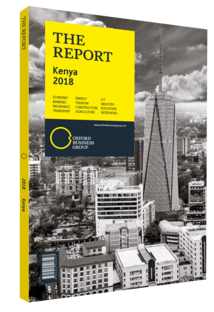The East African Community works to establish political and monetary federations
As the founding member of both the EAC and COMESA, two economic blocs accounting for approximately 145m and 400m people, respectively, Kenya has historically played an important role in politics and integration efforts in the region. As part of the African, Caribbean, and Pacific Group of States (ACP), exports from Kenya benefit from a range of duty reductions when entering the European market.
In addition, in September 2017 Kenya and Rwanda relaunched efforts to conclude a long-awaited trade agreement with Europe, which would secure preferential access for Kenya products destined for EU markets. However, reticence from other EAC members such as Tanzania, Burundi and Uganda have delayed negotiations, which were expected to be concluded at the EAC’s February 2018 heads of state meeting but were still pending as of September of that same year. Kenya also qualifies for duty-free access to the US market until 2025 for a number of products under the African Growth and Opportunity Act.
Regional Integration
African countries remain the main destination for Kenyan exports, accounting for some 41% of total exports in 2016, with the EAC accounting for over 50% of this amount, according to the “Economic Survey 2017” from the Kenya Bureau of National Statistics (KBNS). Headquartered in Tanzania, the EAC is made up of the six Swahili-speaking states of Burundi, Kenya, Rwanda, Tanzania, Uganda and South Sudan. With a population of approximately 150m people and a combined GDP of $146bn in 2016, the community has been one of the driving forces behind integration efforts in the region.
Tasked with widening and deepening cooperation among member states on political, economic and social matters, the EAC’s activities rest under four pillars including: a Customs union which was established in 2005; a common market – which enforces free movement of goods, persons, labour, services and capital – established since 2010; a monetary union which is under development following the adoption of the East African Monetary Union Protocol signed in 2013, and the ultimate objective of creating a regional political federation. While the first two pillars have both fallen behind schedule, progress has been made at the level of the monetary union with the introduction of the East African Payment System in 2014 and the East African Monetary Institute in 2017, which seeks to create a single currency for EAC member states by 2028. In February 2018 two bills were tabled at an EAC assembly to provide funding assistance for the institute. Regarding political federation efforts, in May 2017 EAC members signed up to the Political Confederation, a transitional model that seeks to implement aims such as common foreign and security policies.
TFTA
The Tripartite Free Trade Area (TFTA), an agreement of 26 countries from the regional economic blocs of COMESA, the EAC and the Southern African Development Community, was launched in June 2015 and has so far amassed 22 signatures, with the latest addition being Botswana in January 2018. The objectives of the TFTA are to strengthen intra-regional trade, reduce tariffs, increase investment flows and develop cross-regional infrastructure.
Imports & Exports
While Kenya has historically maintained strong relations with major Western powers such as the UK, US, and the EU, the last decade has seen the establishment of strong bonds with Asian nations, such as China and India.
In terms of export values by destination, in 2016 Uganda was the largest recipient of Kenyan goods, at KSh62.2m ($609,409); followed by the Netherlands, with KSh43.5m ($426,195); the US, at KSh43.4 ($425,215); Pakistan, KSh40.3m ($394,842), and the UK, which was in receipt of goods to the value of KSh37.6m ($368,389), according to the KBNS. In 2016 Asian countries, meanwhile, accounted for the bulk of Kenya’s imports by value at 66.8%, with China ($3.3bn) and India ($2bn) the two leading players in this regard.
You have reached the limit of premium articles you can view for free.
Choose from the options below to purchase print or digital editions of our Reports. You can also purchase a website subscription giving you unlimited access to all of our Reports online for 12 months.
If you have already purchased this Report or have a website subscription, please login to continue.

